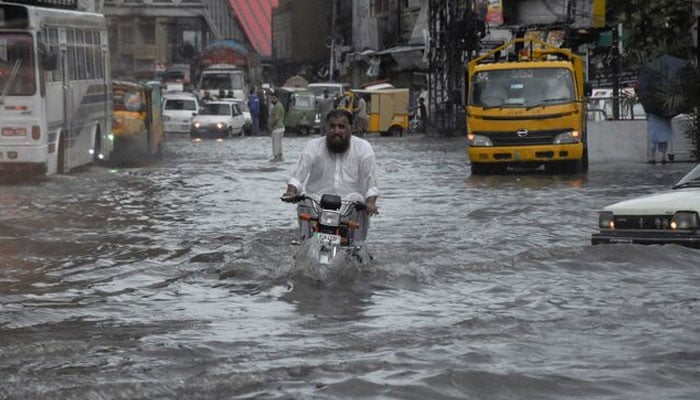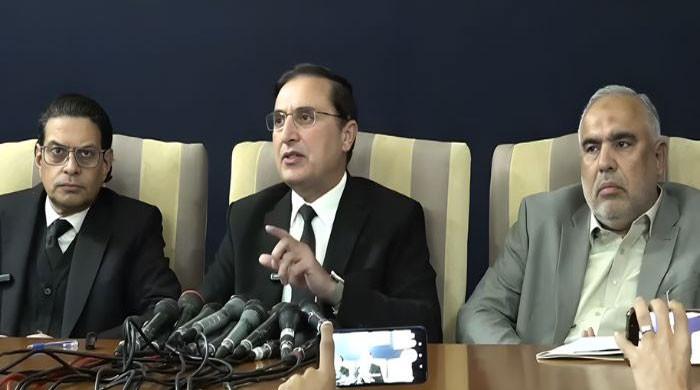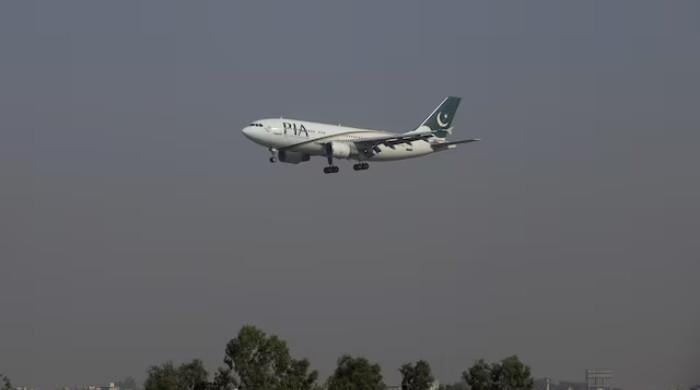Monsoon season: NDMA issues alert as heavy rains expected in July
Sindh districts including Karachi, Hyderabad, Sukkur and others likely to receive 30-75mm rainfall in July
June 24, 2024

ISLAMABAD: The National Disaster Management Authority (NDMA) has issued a alert about flash floods and landslides as heavy and light rains are expected to hit different parts of the country in July.
An official statement issued on Monday said the National Emergencies Operation Center (NEOC) of the NDMA has issued a comprehensive monsoon forecast, highlighting expected rainfall intensities and potential impacts across various regions of Pakistan for the month of July.
The forecast indicates that rainfall at isolated places of Mardan, Malakand and Hazara divisions of Khyber Pakhtunkhwa is expected in 3rd week of July while heavy to very heavy rainfall is expected in 4th week of July.
In 1st and 2nd week of July Lahore, Sargodha, Faisalabad and Gujranwala districts of Punjab and capital territory, Islamabad will receive 15-50mm rainfall at isolated places while in 4th week potential flooding in ICT, Rawalpindi, Lahore, Sargodha, Gujranwala and Faisalabad, hill torrents in DG Khan, moderate to heavy rains in Sahiwal, Multan and Bahawalpur is expected.
As per the latest projections from the NEOC, Mirpurkhas, Karachi, Hyderabad, Nawabshah, Larkana and Sukkur districts of Sindh will receive 30-75mm rainfall in the month of July while in 2nd and 4th week of July heavy to very heavy rainfall is expected in these areas. In 4th week of July, Astore District of Gilgit Baltisitan and isolated places of Azad Jammu and Kashmir (AJK) to receive heavy to very heavy rainfall, potential severe flooding in nullahs and rivers.
The forecast warned that moderate to very heavy rains may cause riverine and flash flooding, urban flooding, landslides in hilly areas, and potential GLOF events.
In light of these projections, the NDMA has advised Provincial Disaster Management Authorities (PDMAs), District Disaster Management Authorities (DDMAs), and other relevant line departments to remain vigilant and prepared to respond to any emergent situations. It is imperative for departments to ensure the pre-placement of machinery and the availability of relevant staff in vulnerable areas.
Local departments are urged to sensitize residents living along riverbanks and associated nullahs about the expected increase in water flows, and to facilitate timely evacuation of at-risk populations from low-lying and flood-prone areas as per evacuation plans.
Additionally, citizens are advised to take extreme precautionary measures, such as staying away from electric poles and weak infrastructure, and refraining from driving or walking in waterways, read the statement.









